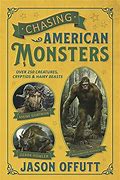The Five–A Long-Overdue Recognition of Jack the Ripper’s Victims
Picture this—it’s night in the city. Fog rolls off the Thames, its tendrils penetrating the deepest alley, the darkest corridor, shrouding the dark and creating halos around the gas lamps that line the dingy, cobblestone streets. Revelry can be heard from a nearby pub—singing, shouting, laughing…a glass breaks.
Framed against this backdrop, a woozy woman steps from the pub and wanders alone, down the street, singing softly to herself. A male figure, shrouded in mist and darkness, approaches her, his coat billowing behind him, top hat perched on his head…we see a glint of sharp metal in his hand…
What comes to mind?
Jack the Ripper has become a major part of our collective cultural consciousness. The first modern serial killer, the dashing, clever, evil villain who taunted the police and got away with it. Movies, TV shows, posters, songs…all have either riffed on this theme repeatedly or celebrated it outright.
However, there’s something we forget—his victims. Sure, some might know a name or two—Mary Kelly, for example, or Catherine Eddowes. But to pop culture, these women are mere props, existing in our imaginations only long enough to be stalked and killed…while Saucy Jack looms large.
Thankfully, Hallie Rubenhold has taken it on herself to rectify the situation. Her latest book, The Five—The Untold Lives of the Women Killed by Jack the Ripper takes us deep into the world of Jack’s victims—Polly Nichols, Annie Chapman, Elisabeth Stride, Catherine Eddowes, and Mary Jane Kelly.
Rubenhold devotes a section of the book to each victim, from the first to the last, and it’s endlessly fascinating. The women we meet on these pages aren’t just cardboard cutouts to give a story some titillation, but rather are fully fleshed out, fully human, working-class women whose lives, for different reasons, all converged on the same London slum in those fateful months of 1888. These are women who, for the most part, tried to make life work, with families and children and even what education was available to them. They were neither the illiterate, immoral drunks we meet in some corners of Ripperology, nor were they young, attractive prostitutes. They were simply women who had been cast out of society…they weren’t saints (alcoholism is a common thread), but they weren’t terrible people, either. That the police at the time didn’t distinguish between a woman on her own and an active prostitute says more about the shortcomings of Victorian society than it does these women. These were just women, trying to survive in a society that was stacked against them almost from birth.
Rubenhold’s writing is simply stunning, taking us into the Victorian world these women were born into and lived their lives in. She weaves her tapestry not only from the newspapers and police reports of the time, but also church records, Victorian writings, and inquest testimony, among other things.
The message I take from the book is this—we must never forget the fundamental humanity of those that came before us. The Five have been denigrated and devalued in our culture, even as we glorify the Ripper. And this applies to other cases as well. Can a casual reader name any of Ted Bundy’s victims? Or Jeffery Dahmer’s? Or the Yorkshire Ripper’s? We can’t, and that is an unfortunate patch on all of us.
Rubenhold does what we all should be doing—letting the victims speak, understanding their essential humanity, memorializing them for future generations. Of course, it’s far too late—as Rubenhold writes, describing Mary Jane Kelly’s funeral: “Following her death, Mary Jane, an otherwise anonymous resident of Spitalfields, also became what Whitechapel imagined her to be: a local heroine who had suffered at the hands of a monster still on the loose.” Would that society had done more for her and the others before they became ‘heroines.’
The Five is an amazing historical/biographical work. It should also be a wake-up call.






2 Comments
Barb
This looks really interesting. I might need to request it at the Library.
What do you mean about “a woman alone” vs ” a prostitute “? Were some of the victims not prostitutes, then?
The Armchair Fortean
Correct! Only Mary Jane Kelly pursued the trade as a way of life, although Elisabeth Stride spent a brief period during her younger days. But truly, read the book. It’s fascinating.